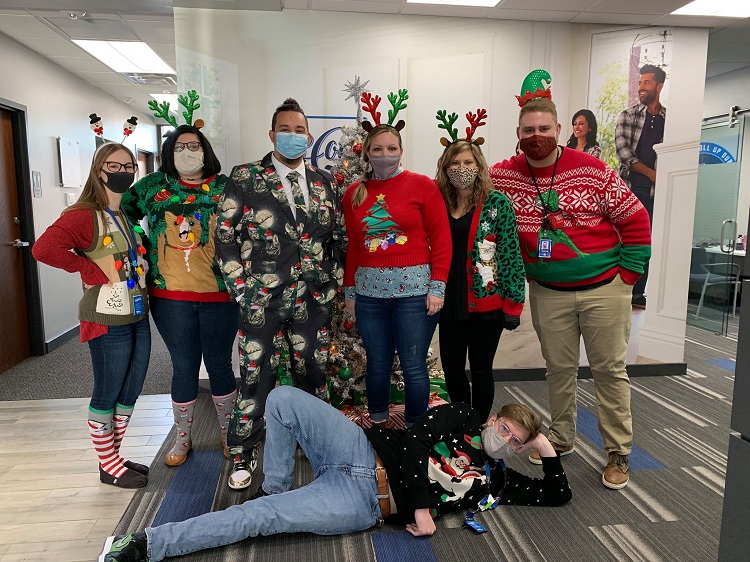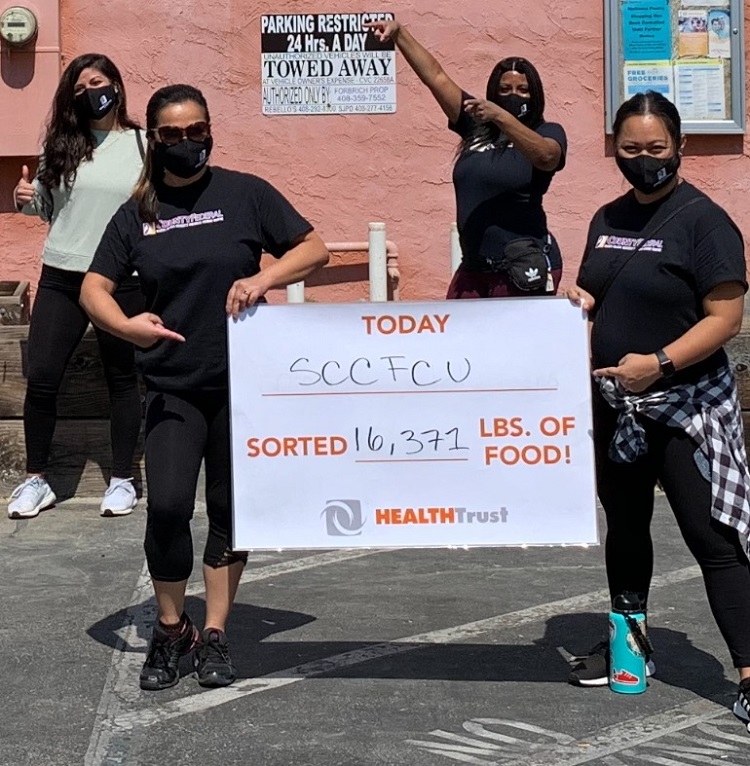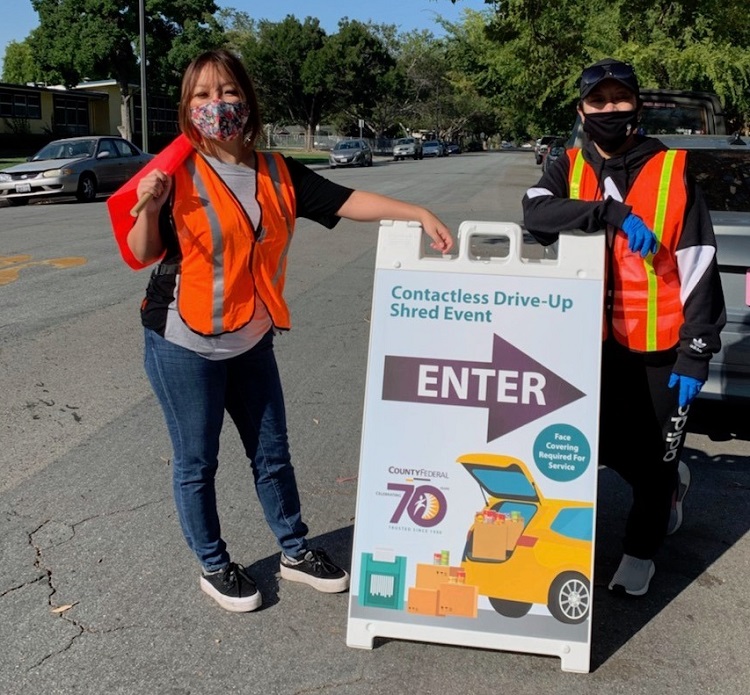Top-Level Takeaways
-
After a tough 2020, credit union leaders are looking for new ways to engage employees.
-
Food delivery and surprise stipends were popular initiatives last year.
The ongoing pressure from the coronavirus pandemic has been both disorienting and demoralizing for credit union employees. Many employees were able to move into a remote office environment and hit the ground running when branches shut down and social distancing became standard operating procedure 12 months ago. Other employees, however, have had to spend their working hours masked up behind a Plexiglass screen.
Without typical member or co-worker interaction, the experience of on-site credit union employees will continue to be different from and more challenging than years past. But when times get tough, credit unions get creative.
From food and clothes to virtual activities and cold, hard cash, credit unions have created clever ways to maintain operations, increase employee engagement and morale, and have fun during difficult times.
Here are four stories.
ORNL Federal Credit Union
Janita Clausell is senior vice president and chief retail officer at ORNL FCU ($2.7B, Oak Ridge, TN).
From an engagement standpoint, how was 2020 on your staff?
Janita Clausell: Unfortunately, we had to cancel everything we had planned for 2020 because of the pandemic. We recognized early on it was important for branches and departments to plan their own ways to engage employees.
Then there was the difference between situations, where some back-office employees could work from home and front-line workers could not. So, of course, that was a challenge. But our branch staff members are close-knit, always have been, because they’re together so often. During the pandemic, they got even closer. We knew they were the support systems for one another, but we had to be mindful to enforce social distancing guidelines.
How did you try to increase engagement?
JC: We had each branch run its own engagement efforts. We did plenty with the dress code, such as dress in any era, wacky Wednesday, Halloween costumes. We even had a homemade Christmas sweater contest.
We had pumpkin painting and gingerbread house contests where members voted on their favorites. During the holiday season, we had an elf in our branches who trained the team on products and services.
The branches tried a number of things before the doors opened for the day to get employees ready to serve members. For example, games like Jeopardy with our products and services as answers, musical chairs, punch the cup, and Nerf wars.
What are you looking forward to in 2021?
JC: Empowering our managers to take charge of engagement. They are going to follow our lead, so what can we do within our sphere of influence to engage and motivate teams? They are essential workers, so how can we help them feel like it?
Likewise, we are still thinking about the challenges that come with the vaccine. We want them to be vaccinated for their own health and the health of their families, but will they feel the same?
Fun Times At ORNL FCU



Michigan State University Federal Credit Union
Deidre Davis is the chief marketing officer at Michigan State University FCU($5.7B, Lansing, MI).
From an engagement standpoint, how was 2020 on your staff?
Deidre Davis: Like many in our industry, we faced challenges brought on by the pandemic. Our employees met these challenges head-on, finding new ways to support our members as they continued to achieve financial success and their goals.
With branches at reduced or zero capacity, many branch employees pivoted to our call center, our eServices team, and our drive-thrus. Our call center received 823,035 calls in 2020, the highest ever in our history.
5 Ways MSUFCU Meets Needs
- Added curbside service in branch parking lots, expanded service offerings in drive-thrus, and made appointments available at many branches.
- Increased ATM transaction limits and removed Reg D restrictions on the number of transactions on savings accounts.
- Added tap to pay technology to MSUFCU debit and credit cards for contactless purchasing.
- Developed Fran, a virtual assistant that answers general inquiries.
- Introduced video chat and installed video tellers at many branches.
Several other departments including mortgage and home equity, business services, and member solutions were getting much busier due to declining mortgage rates, the introduction of PPP loans, and the financial hardship that some members experienced. Numerous employees, including nearly 100 branch employees, took on new roles to make sure members were quickly assisted.
Our employees looked at challenges as opportunities to find new and creative ways to help our members, especially those under financial stress. Our resilient team of employees pulled together to serve our members. And even though it was a challengingtime, our engagement numbers reflect employees’ overall positivity. The Gallup Employee Engagement survey reports the average percentage of engaged employees as 31% and actively disengaged employees as 14%. Overall, our engagement ratios far exceeded the Gallup averages. The survey showed 61% of our employees are engaged while only 5% are actively disengaged.
How did you try to increase engagement?
DD: We provided a $1,000 stipend to branch staff in October to recognize employees for their dedication to serve members and for their adaptability during the pandemic. Approximately 32% of our employees received a stipend to use however they wanted. The stipend was one way to thank and recognize employees who were serving members in person during an uncertain time. Employees who received the stipend were appreciative. Even more telling of the amazing culture of support within our organization is that many employees who did not receive a stipend because of the nature of their positions also were vocally supportive of this gesture.
In addition, we hosted safe employee-focused events, including a free drive-in movie, virtual Halloween for employees’ families, and a virtual Festive Sweater Day. Managers also introduced morale-boosting activities, such as branch employee award ceremonies, handwritten personal thank-you notes to employees, and personal delivery of goodie baskets to employees’ doorsteps. To assist employees in stress reduction and health management, we sponsored virtual yoga sessions, a virtual health fair, and free webinars featuring topics like resilience and self-care, the power of food, and stress management.
Our HR also introduced RISE, an internal recognitional portal. Employees and managers use this platform to recognize acts of service demonstrating our core values. In the first six months, more than 5,000 recognitions were posted.
What are you looking forward to in 2021?
DD: We are well into our 2021 plans, which include hosting volunteer wellness contests through our WellStep app and webinars on topics including mental health and working from home. We hosted our Annual Awards Gala virtually this yearto celebrate our 2020 accomplishments. We are also hosting the annual Run for the House fundraiser for Ronald McDonald House of Mid-Michigan at our headquarters in March. Lastly, as part of our employee engagement survey, each team has created actionplans based on results and conversations within their departments.
We’ll continue to provide ways for employees to be more involved at the credit union, including opportunities for them to be a part of cross-functional groups and to volunteer (socially distanced) to meet the needs of our community.
MSUFCU Adjust To The New Normal


Santa Clara County Federal Credit Union
John Wu is the vice president of member experience at Santa Clara County FCU($922.4M, San Jose, CA).
From an engagement standpoint, how was 2020 on your staff?
John Wu: We’ve had some of the tightest restrictions in the country. In recent months, we were no longer allowed to eat in the breakroom or inside the branch at all. Employees have to sit in their car. Things like that have put a damper on engagement.
How did you try to increase engagement?
JW: We gave webcams to everyone so we can be on video when we have meetings, and when we do silly things like funny hat days, pet days, or ugly Christmas sweater contests, we can see and interact in real time. We’ve also been putting together picture collages and PowerPoint birthday cards in lieu of sending one in the mail. We’re always looking for new ideas.
We signed up for a corporate account with DoorDash, the food delivery service. Individual accounts limit how many meals you can buy in a given time period, whereas the corporate version allows us to buy food for our teams from the restaurants they want given the price cap we set. Then, DoorDash allows the account holder to pay a small fee that then waives the delivery fees. We haven’t tried out that piece yet, but it’s something we’re considering. It’s a simpler, more efficient way to do something nice for our employees who’ve been working hard. The team has been appreciative, so that’s been a successful way to build engagement.
What are you looking forward to in 2021?
JW: The vaccine. We’re not mandating the vaccine, but we are encouraging it, and we’re going to give people time off to get it. People are getting burnt out, but we’re trying to provide what we can to make their working experience better while also encouraging them to be aware and take precautions in their personal life. We can’t enforce what they do off the clock, but it can put a strain on morale.
An important lesson from last year was to listen to feedback and to not dismiss anything without giving it some deeper thought. There are no bad ideas. And, when it works, we’re able to adapt and adjust quickly. I see more of that as the year goes on.
SCCFCU Safely Engages With The Community

According to Wu, employees are eager to safely volunteer when it is possible. Last year, that included sorting food for a local foundation.

Santa Clara County FCU safely hosted a popular event, Shred Day, to make a difference for community members.
Tucson Federal Credit Union
Trish Kordas is the chief culture officer at Tucson FCU($569.2M, Tucson, AZ).
From an engagement standpoint, how was 2020 on your staff?
Trish Kordas: We intended to complete a full shift to a universal employee and appointment-only business model in 2020 and prepared and trained for 18 months before COVID-19 hit. From that perspective, the branch transition was easy. Business-wise, we adapted well.
We saw more of a social and cultural shift. We saw pockets where people were feeling the blues. At work, they were around people. When we sent them home, some basically lived in isolation if they didn’t have a spouse or roommates. One of the beautiful things about our culture is our collaboration, our synergy, but I’ve seen those things take a hit through the pandemic. We can do anything for a short period of time. But everyone has a breaking point, and at certain points, we reached ours.
How did you try to increase engagement?
TK: Because our CEO paid for anyone who wanted a grocery delivery from Shipt or Instacart, in December 2019, it became a huge gift when many of us were spending time and eating at home, and this was a way to make life a little easier. Also, on the cooking theme, we held video cooking classes. We sent shopping lists a week in advance and cooked together.
We did plenty on video because it was the best replacement for the missing in-person connection. We did yoga, stretching, and meditation; we had Zoom coffee breaks to grab a cup and talk about our evening; we held scavenger hunts where employees raced to be the first to find an item in their house; we had makeup tutorials; we had movie watch parties. It was all virtual, but it was nice. We’re all missing the nuances of human interaction, but video is the only replacement we have. It worked and continues to work. Beyond video, we sent weekly tips and facts that focused on a wide range of topics from physical to mental wellness.
For teams that participated and did things together, we saw performance increase, output increase, and engagement increase. We also saw fewer employee relation issues, which was important.
After the pandemic hit, we gave a $65,000 donation for emergency food programs, a community transition program for those recently incarcerated, a support service for those experiencing domestic abuse and a children’s clinic for comprehensive services. This was all in addition to our annual giving. Our employees were inspired and proud to be part of this effort.
What are you looking forward to in 2021?
TK: In 2020, we tested our limits, we tried things, and we were successful. We were more nimble than we’d ever been before. But I’m really looking forward to a more hybrid approach in 2021. Whether in person or at home, we’re hoping to be more innovative in deploying solutions that will meet the needs and remove barriers for our employees, allowing them to focus on our members.

Tucson FCU sent weekly tips and facts to employees on numerous topics. Here, three quick ways to stay productive while working from home.
These interviews were edited and condensed.